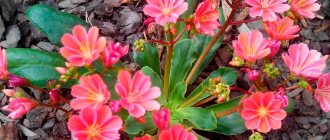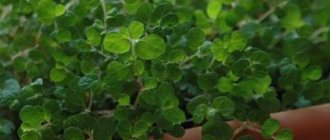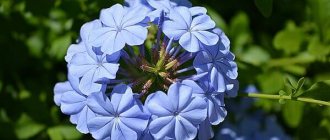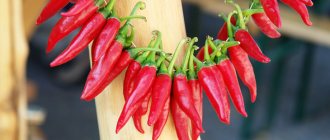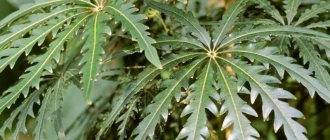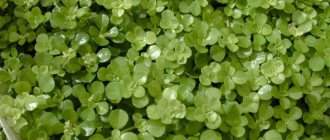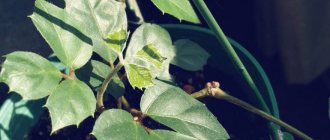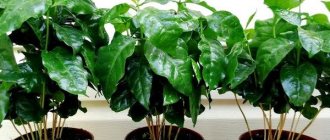Bouvardia: description
Bouvardia: photo of an indoor flower
The stem of a houseplant Bouvardia can reach from half a meter to one and a half meters in height, depending on the type, variety and growing conditions of the crop. The shoots can be either straight or slightly branched. The plant is also characterized by sparsely located internodes. The leaves grow opposite each other and reach sizes from 3 to 10 cm. The shape of the leaves is wide lanceolate, sometimes there are elongated, oval leaves with a pointed tip. The leaves have a leathery, smooth surface to the touch. A very long flowering period characterizes this plant, which lasts all summer until the first frost. Sometimes it happens that a flower begins to bloom in winter. The flowering plant looks very beautiful and resembles a bouquet consisting of many flowers. The diameter of one flower is quite large, it can be 15 cm. Each flower has four separate petals.
Household use
Bouvardia is most often used in compositions and wedding bouquets, as well as for corsages. The delicacy of the flowers and the very soft tones of the colors give a feeling of femininity. And in combination with an airy wedding dress, they enhance a woman’s feeling of vulnerability and insecurity. Small cute bouquets made from Bouvardia flowers will be a great sign of attention for young representatives of the fair sex.
The plant looks good in pyramidal and round compositions, which can be surrounded by eucalyptus branches, delicate asparagus greens and tillandsia leaves, and bright varieties of this plant will look good in combination with boronia and brunia.
Bouquets made from bouvardia can last from 1 to 2 weeks, but new varieties of the “Royal” series can easily live from 13 to 22 days if they are placed in water with fertilizing.
But besides this method, you can extend the life of a Bouvardia bouquet using temperature conditions; they must be taken out at night in a cool room with a temperature of up to 8 degrees; if the temperature is lower, even by one degree, the bouquet will disappear.
Bouvardia flower: home care
The houseplant Bouvardia domestica is no longer as popular as it once was. The reason for this is unclear, since the plant is unpretentious and undemanding to care for, and is also easy to grow even for beginners.
Light
Bouvardia, like any indoor plant that blooms, needs high-quality lighting, but is afraid of direct sunlight. If the flower is on a sunny windowsill, then it is necessary to make some kind of shelter, and if the place is dark enough, then it is better to create artificial lighting.
Temperature
The room where bouvardia grows should have a temperature of about 20 or 24 degrees. If your plant belongs to a variety that does not bloom in winter, then during this cold period it is necessary to provide it with rest, which means placing it in a room where the air temperature will not exceed 10 degrees, but will not be below this mark, so that the leaves are not frozen.
Bouvardia: watering at home
Any living organism needs moisture. Indoor Bouvardia is no exception. It is necessary to water it regularly, but moderately. Here it is important to focus on the top layer of soil so that it is not wet, and water it when it dries out to about 2 cm in depth. This plant is very afraid of stagnant moisture in the soil, which can result in rotting processes in the roots or stems. During the dormant period, watering is minimized and the condition of the plant is monitored. If you see that the leaves have wilted or the stems have drooped, then you need to slightly moisten the soil.
Water for irrigation should be warm, without chlorine and preferably left to stand for some time. Bouvardia does not need strong air humidity, but is very responsive to regular spraying with warm water, which, in addition to moisturizing, also washes away dust from the plant or dirt, if any.
Formation
Houseplant Bouvardia: photo
In addition to performing a decorative function, the bush needs to be shaped and the elongated stems need to be pinched, especially at the beginning of the plant’s life. Thus, the bush will bloom better and look brighter. In autumn or spring, you should cut Bouvardia indoors and cut off all the stems to about half.
The soil
The Bouvardia flower loves a good, fertile, rich nutrient mixture through which air and moisture freely penetrate. You can use ready-made universal soil in the store for indoor flowers, or it’s better to add some vermiculite or perlite. You can prepare the soil yourself by properly mixing peat, turf, leaf soil and sand.
Feeding
This plant is very responsive to fertilizers, which should be applied once every 2 weeks, especially when the flower is actively growing and developing. Ready-made complex mineral preparations, which are designed specifically for indoor flowers, are well suited as fertilizers. During the dormant period, all feeding and fertilizers are excluded.
Bouvardia x domestica
Bouvardia domestica is a beautiful indoor plant that is highly valued for its luxurious, fragrant inflorescences. Previously, this type was a common element in a wide variety of compositions. In the past, a large number of different varieties of Bouvardia domestica were bred. Unfortunately, only a few of them are known today.
The rest were forgotten and completely lost in those years when the plant lost its popularity. Nowadays, the most popular varieties are those with white, red and orange flowers. The long tubular flowers of Bouvardia domestica are collected in thyroid inflorescences and slightly resemble the flowers of a closely related species - Pentas lanceolata. The flowers of some varieties emit a pleasant aroma.
Flowers and flowering Bouvardia domestica blooms so profusely that lush inflorescences cover the entire plant. Its flowers and inflorescences can be used to create a wide variety of compositions. Some bouvardias , such as long-flowered bouvardia (Bouvardia longiflora), are grown for cutting.
If you want to put Bouvardia domestica flowers in a vase, then put a special product for cut flowers in the water, then they will retain their freshness longer. Bouvardia domestica in August, then, thanks to the long flowering period, it will delight you with its flowers all autumn (until November).
Exposition Bouvardia domestica is a bushy plant no more than 60 cm high. In the summer it can be grown outside, but before frost arrives the plant is brought indoors. Remember that Bouvardia prefers shaded areas. Bouvardia at different times of the year January-April: at this time of year, Bouvardia domestica can be propagated by offspring, preferably root ones. For propagation, powerful, thick roots are used, which are cut into fragments 2.5 cm long. Place each such root fragment in a flower pot filled with a mixture of peat and sand and cover with a layer of earth approximately 15 mm thick. Then place the containers in a room with a temperature of 13-15°C. May-December: after the danger of return frosts has passed, the bouvardia can be taken outside. Place this plant in a bright place, but protect it from the bright rays of the midday sun. During the growing season, but only until the end of June, you need to pinch the growing tips of young shoots of the plant several times. Thanks to this procedure, the plant will bush better. Regularly feed domestic bouvardia with suitable fertilizers. At the end of August, bring the plant into the house. Bouvardia blooms in August. If you water and feed the plant in time, it blooms until November. Care Bouvardia domestica is an absolutely unpretentious houseplant. She prefers bright places, and in summer she needs fairly low temperatures. At the end of flowering, perform formative pruning of the plant; young stems can be used as apical cuttings. Plant bouvardia in nutritious and permeable soil. Watering and feeding In summer, Bouvardia needs moderate but regular watering. In winter, watering should be sparing and the soil should remain slightly moist. Before watering the plant, make sure that the top layer of soil is dry. During the growing season (until December), feed domestic bouvardia once a week with universal complex fertilizers. Choosing a location Bouvardia grows best in sunny locations. However, she prefers bright, indirect light rather than direct sun. It is especially difficult for her to tolerate the bright sun in summer. Bouvardia domestica can grow in a partially shaded area. Provide the plants with a temperature within 13-15°C. In winter, the temperature may be slightly lower - about 5°C, but not lower. Varieties One of the most popular varieties of Bouvardia domestica is the variety 'President Cleveland' with crimson flowers. It is also worth paying attention to plants of the Royal line, for example, the variety 'Royal Katy'. Less commonly found on sale are varieties of Bouvardia with double flowers, for example, the pink 'Bridesmaid'. It is also worth paying attention to the species Bouvardia longiflora. This is a beautiful plant with white flowers that smell like jasmine. Buying Bouvardia is usually found on sale during flowering, that is, from August to November. Choose plants that flower profusely. Bouvardia can grow in a house for many years if formative pruning is carried out annually after flowering. Bouvardia domestica is not the most expensive plant. Possible problems The Bouvardia aphid is a plant that is quite resistant to diseases and pests. The exception is a pest such as aphids. If you find that the plant is damaged by these pests, then treat it with a strong stream of water, and in case of severe damage, use a suitable insecticide.
The ugly form of Bouvardia domestica in natural conditions is a rather inconspicuous and small plant. To give the plant an attractive appearance, after flowering has finished, you need to shorten its stems by half. In spring, it is recommended to pinch out the growing tips of all stems.
Bouvardia: propagation of a houseplant
Houseplant Bouvardia: photo
The Bouvardia plant is usually taken from cuttings. To prepare the cutting, you need to select the top part of the stem and cut it at such a level that there are approximately 3 leaves left on it. It is enough to place the cut off parts in a jar or glass of water, after which the cutting will grow new roots in a short time.
If Bouvardia has grown too much, then propagation can be done by dividing the bush. However, this is impractical, since the age of the plant will remain the same, and it will bloom much worse or will not bloom at all.
Reproduction of Bouvardia
The short lifespan of bouvardia necessitates frequent reproduction.
Breeders use 3 methods:
- Dividing the bush.
- Transplantation of a root fragment.
- Rooting the apical cutting.
The first 2 methods are rarely used due to low efficiency. Considering that the decorative value of bouvardia occurs only in the second year, dividing an adult bush does not make sense. Propagation by root shoots will allow you to grow a new plant, but for beginning gardeners the procedure often ends in failure.
The most effective method of propagation is from apical cuttings. The material left over after trimming or specially prepared is used. For propagation, prepare a shoot 10 cm long. There should be 2-3 internodes on it. You can dip the cuttings in a container of water or immediately plant them in a small pot. The first option is more reliable and you can visually monitor the development of roots.
If you follow the peculiarities of growing bouvardia at home, you can achieve lush flowering of a tropical plant on your windowsill. The main thing is regularity of care and the correct sequence of actions.
Diseases and pests of Bouvardia
Like any indoor plant, the plant is susceptible to various diseases. A common one is root rot. It usually occurs when there is too much moisture in the soil or stagnation of water occurs in the absence of a sufficiently good drainage layer. This fact must be taken into account when planting a new plant. This disease cannot be treated, so the bush must be destroyed, leaving only the tops of the stems as cuttings for further cultivation.
Another common disease for boulevard is leaf chlorosis. It appears because the plant is watered with unsuitable water or water containing chlorine. To protect the flower from this disease, you should feed Bouvardia with iron-containing preparations from time to time.
The most common pest that attacks this indoor crop is aphids. You can get rid of this insect mechanically by washing and spraying the leaves and stems with warm water.
Watering and humidity
Bouvardia leaves retain moisture well, so watering, even during the growing season, is recommended for it to be moderate and economical. Usually, the dried out top layer of the coma indicates that it is time to water the bovadia. Soft, chlorine-free water is perfect for this.
Bouvardia has no special preferences for air humidity. Dirt and dust from the leaves are washed off in the shower.
Mango - benefits and harm, composition, calorie content. How to eat mangoes correctly, recipes. How to grow mangoes at home || Latest Posts || Recent comments
Buvarlia is beauty, and that’s all!
Views of Bouvardia
Houseplant Bouvardia: photo
The following types of Bouvardia plants are in great demand:
- Yellow. In addition to the yellow color of the petals, this plant has a tall stem and can grow up to 1 m.
- Bouvardia longiflora plant. This plant also grows quite long, has triangular-shaped leaves and very beautiful snow-white flowers that have a pleasant aroma.
- Bouvardia jasmine flower = Bouvardia alba. This name is given because the smell that the white flowers of Bouvardia emit is similar to the aroma of jasmine. This species belongs to varieties that can bloom in winter. In addition, it is a compact bush that does not exceed half a meter.
- Bouvardia domestica. Very beautiful and one of my favorite types of Bouvardia. The stems can grow about 70 cm in height. The leaves here are egg-shaped, pointed towards the tip and have a bright, rich green color. The size of the leaves is about 5 cm. The flowers have different colors, mainly Bouvardia pink or crimson. The plant variety plays an important role here. A plus is sometimes the presence of double flowers.
1.Seven secrets of success:
| 1. Growing temperature : summer - 18 - 24 ° C, winter - it is advisable to provide a cool dormant period at a temperature of 10 - 13 ° C. The plant should not be exposed to temperatures below 7 ° C. |
| 2. Lighting : Brightly lit location, plants should get sunbath in the morning and evening. |
| 3. Watering and air humidity : regular and abundant watering in spring and summer should be replaced by limited and rare watering in the winter months. The flower requires fairly high air humidity. |
| 4. Pruning : Both sanitary and formative pruning is required. Regularly pinch out the apical buds of young shoots. |
| 5. Soil : a nutritious substrate that easily allows moisture and air to pass through. |
| 6. Feeding : every 2 weeks with liquid mineral fertilizers in half concentration during the warm season. In the fall, fertilizing is reduced and in winter the plants are put into a dormant period, denying the flower the application of fertilizers. |
| 7. Reproduction : stem cuttings, dividing plants during spring replanting. |
Botanical name: Bouvardia.
Family . Rubiaceae.
Bouvardia flower - origin . A tropical plant that grows in Mexico and South America.
Description. The Bouvardia plant is named after Charles Bouvard, personal physician to Louis XIII and caretaker of the royal gardens in Paris. The genus includes about 30 species of evergreen flowering shrubs with rather thin and brittle stems. The leaves are lanceolate, green, about 5 cm long. From summer to mid-winter, the plant forms surprisingly fragrant inflorescences with the smell of jasmine from white or pink star-shaped tubular flowers. The plant blooms early and is an excellent bushy shrub for greenhouses and indoors. But even with the most careful care, it will last no more than two years, since old plants no longer bloom so readily and abundantly.
Indoor Bouvardia - height . Up to 90 cm.
Signs and superstitions associated with the Decembrist
There are beliefs associated with many indoor plants, and the Decembrist was no exception:
- It is believed that if the zygocactus blooms on time, in December, then over the next year relations with close relatives will improve.
- Premature flowering promises new interesting and useful acquaintances.
- If the Decembrist bloomed at an atypical time - spring, summer, then you should expect a new addition to the family in the coming year.
READ MORE: Cypress types and varieties, planting and care, propagation and use in landscape design
There is also such a belief: a zygocactus in the house of an unmarried woman promises loneliness; it is believed that the girl will not be able to meet her chosen one for a long time. Fortunately, this sign has no evidence.
Is the Decembrist flower a vampire or a donor? It is believed that a plant in the house gives additional vitality to the residents, so the Christmas tree is definitely a donor that gives well-being and peace of mind.
Reproduction methods
The most convenient way for bouvardia is propagation by cuttings. It is enough to cut off the apical shoot with 2-3 internodes from an adult plant in the spring and place it in water. After a few days, the first roots will appear and the shoot can be planted in the soil. The plant begins to grow very quickly and acquires additional branches. After a month it is completely independent and does not require special care. Flowering is possible already in the year of planting.
If you divide the rhizome of a large bush, the flowering process will be delayed until the second year. For planting young trees, use a mixture of sand and peat in equal parts. During the rooting period, the shoots are covered with film or glass to create a greenhouse effect.
Optimal growing conditions
Cultivation of the plant is successful both in garden and at home. The flower is unpretentious, cultivation is accessible to beginners in gardening. Basic care consists of proper lighting, soil selection, optimal pot size, and systematic watering.
Lighting
The homeland of Bouvardia is Central America, Mexico with a warm climate. Care at home is impossible without providing sufficient lighting for 8–10 hours.
It is recommended to place pots with plants on southern and eastern windows for long-term natural light.
In winter, it is necessary to provide artificial light. Advice! In summer, it is recommended to take the pots with Bouvardia outside, onto the balcony. This stimulates active and lush flowering.
Temperature
During the formation of inflorescences, it is important to create conditions close to natural. The air temperature during the day should be 22...24 ˚С, at night it should drop by several degrees.
Similar conditions can be created by placing pots with plants on the balcony. In winter, the plant requires rest. It is important that the air temperature during this period does not rise above +10 ˚С.
Reproduction of the Decembrist
In spring, the plant can be propagated by dividing the bush or stem cuttings. In the second case, green cuttings are most often used, in some cases also root cuttings, but quite rarely.
Rooting of cuttings is normal; it will only be necessary to pinch and re-handle them 3-4 times during the growth period of young plants.
The easiest way to get a new plant is cuttings. It can be combined with the Decembrist pruning procedure. For rooting, a shoot consisting of 2–3 segments is suitable.
How to plant a shoot? The cutting should be dried for 24 hours, then half of the lower segment should be deepened into nutrient soil.
With timely moistening and maintaining an optimal temperature of about 23 ° C, rooting will occur after 14–20 days.
The plant can boast of abundant flowering only in the second year of its growth. This is its disadvantage. After its first flowering, bouvardia may no longer bloom at all, or its blooms will not be as bright and lush. Therefore, gardeners usually replace one bouvardia with another every two years. And young annual plants are usually transplanted into larger pots in the spring months. The plant reproduces in two ways:
- Cuttings are the most common and easiest way to propagate Bouvardia. Shoots are cut from the top of the cuttings of the plant. And the roots grow quite quickly in an ordinary glass of settled water.
- Dividing bushes that have grown. But this method is not very effective, because it does not allow the plant to renew itself, that is, the flowering process is not observed in it.
Ardisia species
Ardisia crenata
This type is most popular among gardeners. The bush is characterized by slow growth, and its height does not exceed 200 cm. The glossy leathery leaf plates have a wavy edge and a dark green color. Instead of flowers, which can be colored pink or white, coral-red fruits are formed in winter. Fruiting can last continuously throughout the year.
Curly ardisia (Ardisia crispa)
The height of the bush is about 0.6–0.8 m. The dark green shiny leathery leaf plates have a wavy edge. The flowering is lush. A large number of white flowers are formed on the stems, while on the shoots of the previous year there are still round fruits of coral-red color.
Ardisia humilis
The size of the bush is smaller than that of curly ardisia. The length of the leathery leaf blades, painted dark green, can vary from 5 to 15 centimeters. Paniculate drooping inflorescences consist of small pinkish flowers. At first the fruits are colored red-brown, but over time they become black and shiny.
Ardisia solanacea
The shoots of the bush are light red, and the leathery leaf plates of a pale green color are not as wide as those of low and curly ardisia. Under natural conditions, this species is a tree whose height is 1.5–6 m. The flowers are pale lilac or pink; they do not have any decorative value. In place of the flowers, fruits appear, which are initially painted in a pale red color, over time they darken and become shiny.
Ardisia elliptica
In the USA, Hawaii, Australia and the Caribbean islands, this species is very popular, where it is cultivated as a garden ornamental plant. The color of the flowers is pinkish. At first, as the berries ripen, they turn red, and later this color gradually changes to a rich purple. This type of ardisia is used in alternative medicine as an antimicrobial agent.


